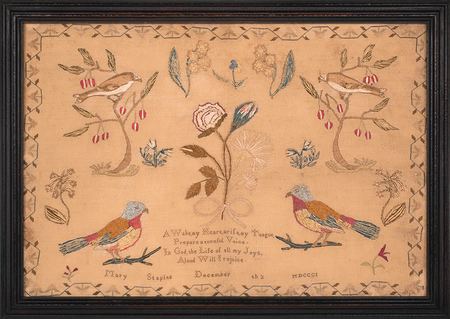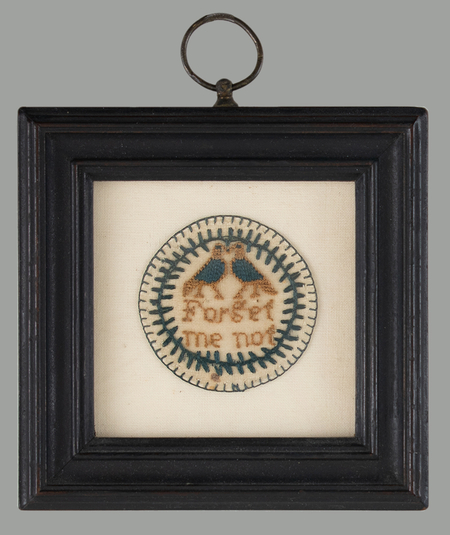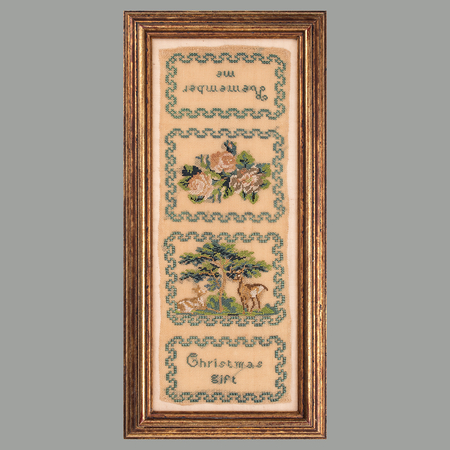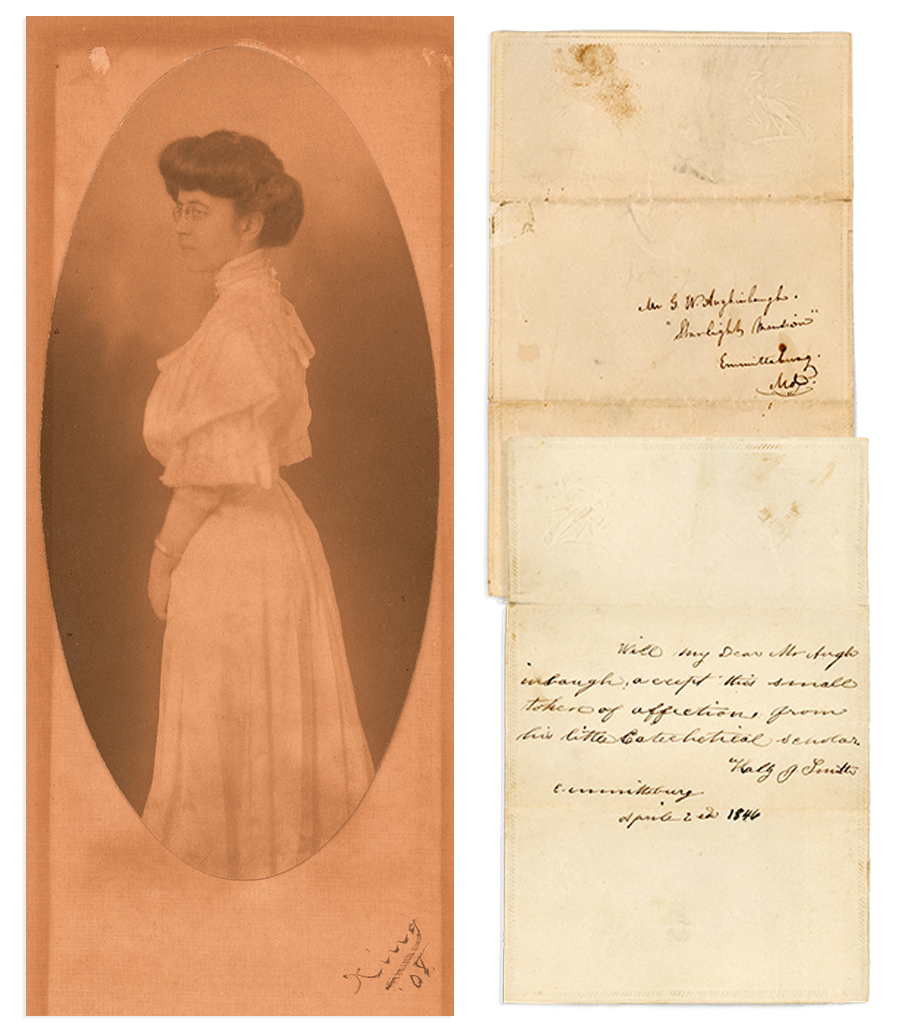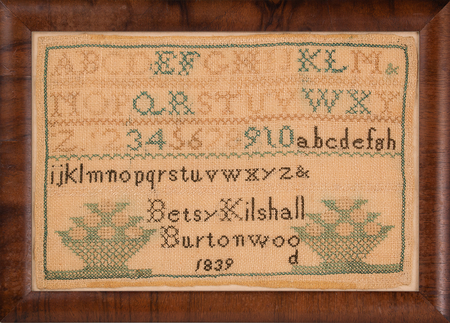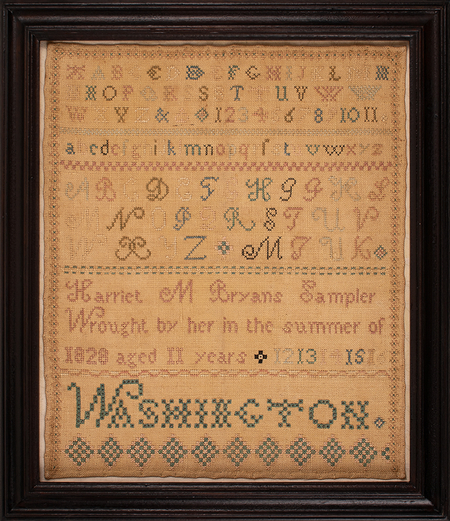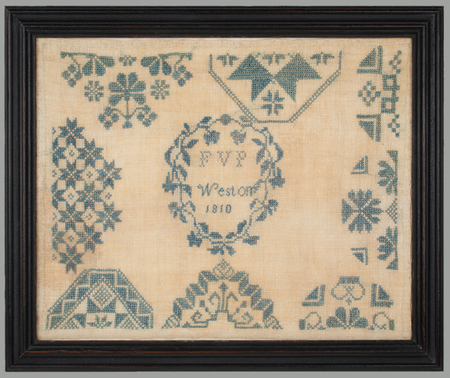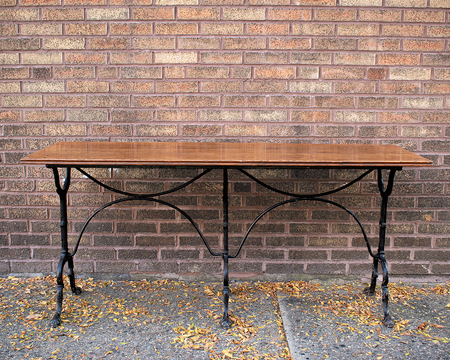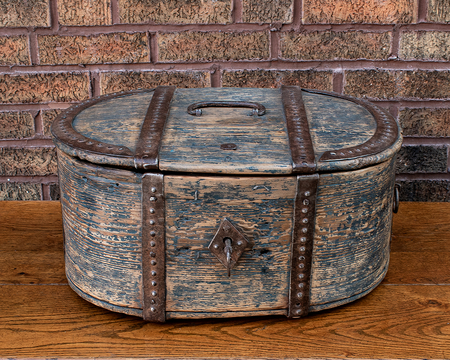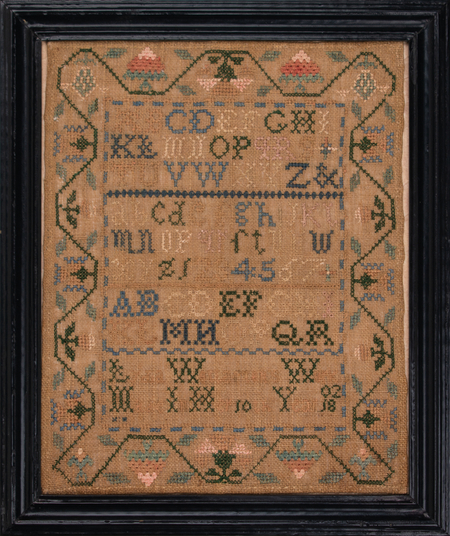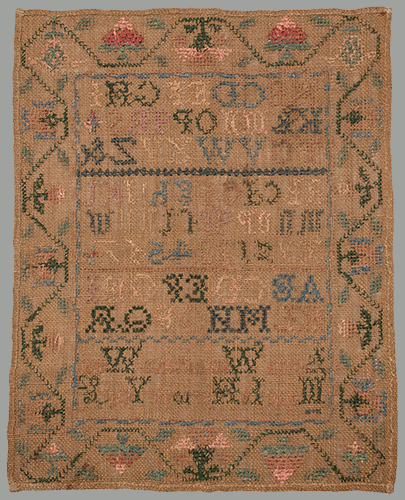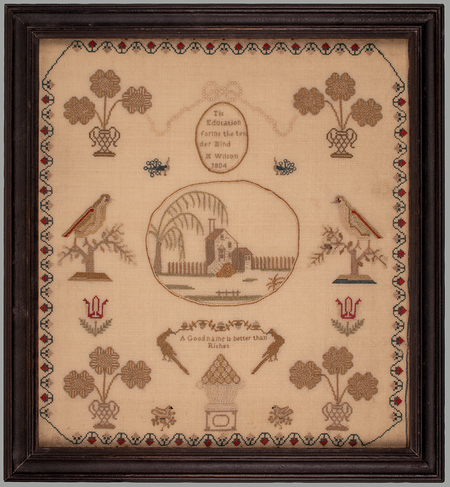One of the most interesting types of Quaker needlework is the geometric medallion sampler and those made at the Westtown School in Chester County, Pennsylvania were the vanguard in America. Frances Vaux Pleasants, a 13-year-old Quaker girl from Philadelphia, entered Westtown in May of 1810 and made this sampler that same year, signing it with her initials. She also made a wonderful ink on paper map of the school and this is in the Westtown School’s collection and published in Threads of Useful Learning: Westtown School Sampler by Mary Uhl Brooks (Westtown School, West Chester, Pennsylvania, 2015), figure 36.
The provenance of this outstanding sampler is highly significant as it was in the personal collection of the late Susan B. Swan, the revered, long-time Curator of Textiles at Winterthur Museum. It was published in her book, Plain & Fancy: American Women and Their Needlework, 1650-1850 (Curious Works Press, 1995), as figure 36. The sampler remained in the collection of one of her sons and is now available for sale. A copy of Sue’s book will accompany the sampler.
A great deal of information about the samplermaker, her parents and her later life is known and a complete file of research, including copies of Quaker records, will remain with the sampler. Frances was born on April 4, 1797, the oldest of the ten children born to Charles and Ann (Emlen) Pleasants, members of the Philadelphia Monthly Meeting.
Notably, her great-grandfather, John V. Pleasants, III (1695-1771) lived in Virginia and an historical marker now indicates the significant actions taken by him. It reads, in part, “Following a successful case before the Virginia court of appeals in 1777, the slaves of John Pleasants were allowed to follow the dictates of his 1771 will and were freed. His son, Robert Pleasants, then gave 78 former slaves 350 acres of his plantation. A community developed known as Gravelly Hill. Here in 1801 a Quaker school for Blacks was established.”
In 1822, Frances married Thomas Haight Leggett and they removed to Flushing, New York where they had seven children. She died in 1876.
The sampler was worked in silk on linen and is in excellent condition. It has been conservation mounted and is in a molded and black painted frame.
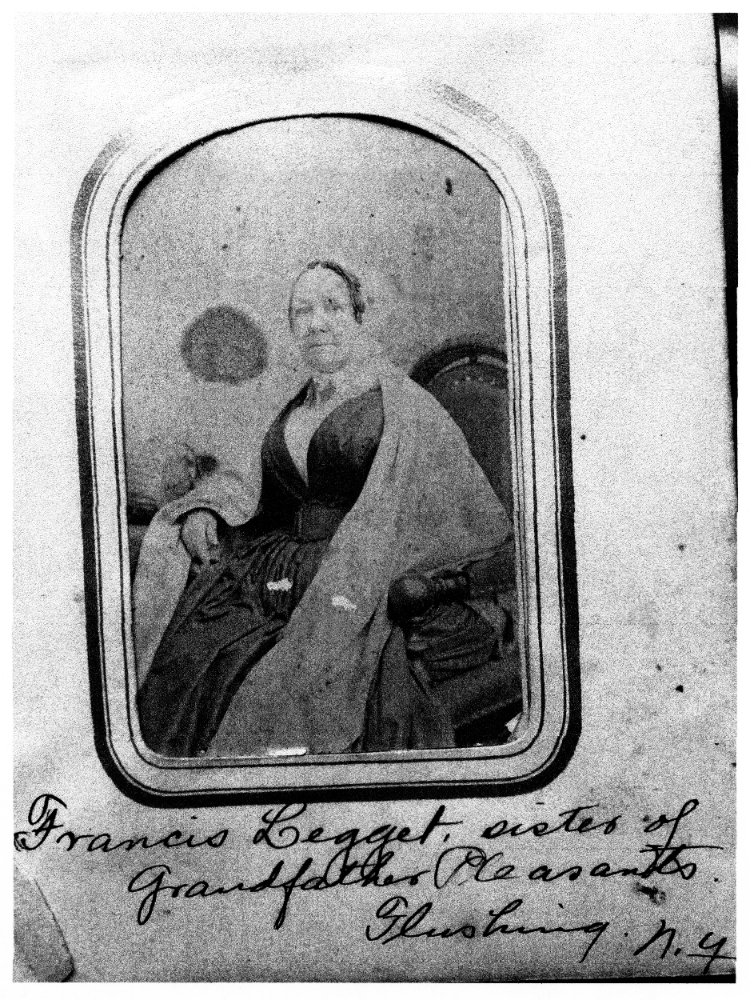
family photo
